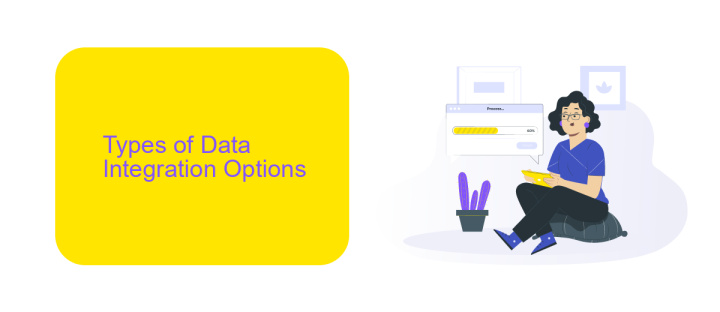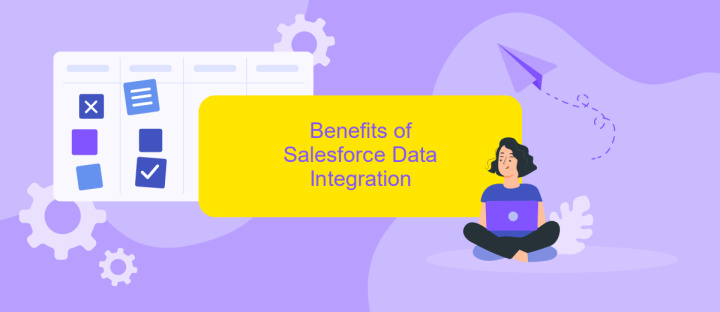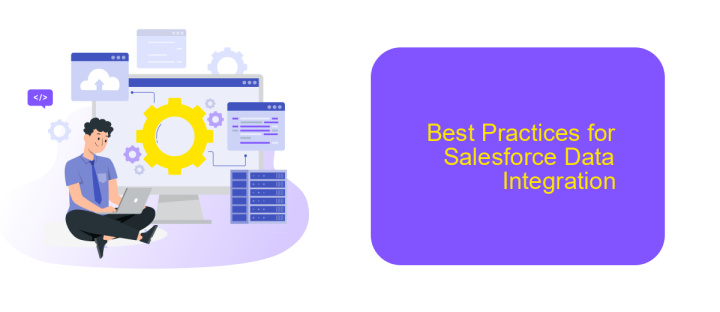Salesforce Data Integration Options
Salesforce data integration is a critical aspect of modern business operations, enabling seamless connectivity between Salesforce and various external systems. With a range of integration options available, organizations can choose the best methods to synchronize data, streamline workflows, and enhance overall productivity. This article explores the diverse Salesforce data integration options, helping you make informed decisions for optimal performance.
Introduction
Salesforce is a powerful CRM platform that supports businesses in managing their customer relationships and data. However, to fully leverage its capabilities, integrating Salesforce with other systems and data sources is crucial. This ensures seamless data flow and enhances overall business efficiency.
- Data Integration using APIs
- Middleware Solutions
- ETL (Extract, Transform, Load) Tools
- Third-party Integration Services like ApiX-Drive
Each of these options offers unique benefits and can be tailored to meet specific business needs. For instance, ApiX-Drive provides a user-friendly interface for setting up integrations without requiring extensive technical knowledge. By understanding and utilizing the right data integration options, businesses can ensure their Salesforce platform operates at its full potential, driving better decision-making and improved customer experiences.
Types of Data Integration Options

Salesforce offers a variety of data integration options to ensure seamless connectivity between your Salesforce environment and other systems. One popular method is using APIs, such as REST and SOAP APIs, which allow for programmatic data exchanges. These APIs enable real-time data synchronization and are highly customizable, making them suitable for complex integration scenarios. Another method is batch data integration, where data is imported or exported in bulk using tools like Data Loader. This is ideal for handling large volumes of data and is often used for initial data migrations or periodic updates.
In addition to these native options, third-party integration platforms like ApiX-Drive can simplify the integration process. ApiX-Drive provides a user-friendly interface for setting up automated workflows between Salesforce and other applications without requiring advanced coding skills. This service supports a wide range of software and can be particularly useful for businesses looking to streamline their operations quickly and efficiently. Whether you need real-time data synchronization or scheduled batch processing, these integration options offer flexibility to meet diverse business needs.
Benefits of Salesforce Data Integration

Integrating Salesforce with other data systems offers numerous advantages that can significantly enhance business operations and decision-making processes. By connecting Salesforce with various data sources, organizations can create a unified view of their customer data, leading to more informed and strategic decisions.
- Improved Data Accuracy: Integration ensures that data is consistent and up-to-date across all platforms, reducing the risk of errors and duplications.
- Enhanced Productivity: Automating data transfers between systems saves time and reduces manual effort, allowing teams to focus on more critical tasks.
- Better Customer Insights: Access to a comprehensive dataset enables deeper analysis and a better understanding of customer behavior and preferences.
- Streamlined Processes: Integration can automate workflows and processes, leading to more efficient operations and quicker response times.
- Scalability: As businesses grow, integrated systems can easily scale to accommodate increasing data volumes and complexity.
Tools like ApiX-Drive facilitate seamless Salesforce data integration by providing a user-friendly platform to connect various applications without requiring extensive technical knowledge. This not only speeds up the integration process but also ensures that data flows smoothly between systems, enhancing overall business efficiency.
Best Practices for Salesforce Data Integration

Effective Salesforce data integration is crucial for maximizing the potential of your CRM system. To ensure seamless data flow and maintain data integrity, adhere to industry best practices. Begin by thoroughly understanding your data requirements and integration objectives. This will help you choose the right tools and methods for your specific needs.
When integrating data with Salesforce, always prioritize data security and compliance. Ensure that all data transfer processes adhere to relevant regulations and standards. Regularly monitor and audit your integrations to identify and resolve any issues promptly. Use robust error handling mechanisms to minimize data loss and inconsistencies.
- Choose the right integration tool, such as ApiX-Drive, to streamline the process.
- Implement data validation rules to maintain data quality.
- Schedule regular data backups to prevent data loss.
- Utilize sandbox environments for testing integrations before deployment.
By following these best practices, you can achieve a reliable and efficient Salesforce data integration. Leveraging tools like ApiX-Drive can simplify the process, allowing you to focus on optimizing your business operations and enhancing overall productivity.
- Automate the work of an online store or landing
- Empower through integration
- Don't spend money on programmers and integrators
- Save time by automating routine tasks
Conclusion
In conclusion, Salesforce data integration presents numerous options, each tailored to meet specific business needs. From native tools like Salesforce Connect and MuleSoft to third-party services, businesses can select the most suitable method for their unique data management requirements. The choice between real-time and batch processing, as well as the decision to use point-and-click solutions versus more complex coding approaches, largely depends on the organization's technical capabilities and integration goals.
For those seeking a user-friendly and efficient integration solution, services like ApiX-Drive offer a compelling alternative. ApiX-Drive simplifies the integration process, allowing businesses to connect Salesforce with various applications without extensive coding knowledge. This not only accelerates the integration timeline but also reduces the operational burden on IT departments. By leveraging such tools, organizations can ensure seamless data flow, enhance productivity, and maintain a competitive edge in today's data-driven landscape.
FAQ
What are the common methods for integrating data with Salesforce?
How can I automate data integration processes with Salesforce?
What is the difference between real-time and batch data integration?
Can I integrate Salesforce with non-Salesforce applications?
What should I consider when choosing a data integration tool for Salesforce?
Apix-Drive is a simple and efficient system connector that will help you automate routine tasks and optimize business processes. You can save time and money, direct these resources to more important purposes. Test ApiX-Drive and make sure that this tool will relieve your employees and after 5 minutes of settings your business will start working faster.


